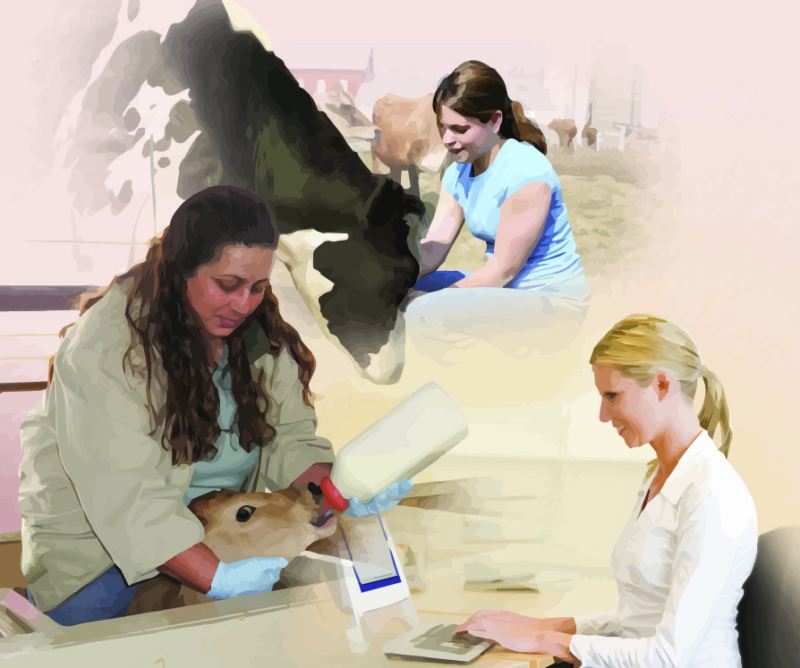Picture this: You’re getting ready to eat dinner, and someone at the table makes you wait to dig in until they can get the perfect picture or video for their social media pages. You’re a little irritated, especially when they joke, saying, “Sorry, the phone eats first!”
However, I can’t relate because I’m one of those phone-eats-first culprits. It turns out that might be a good thing, especially when it comes to promoting dairy to consumers. In fact, with billions of social media users worldwide being influenced daily, it might be critical that our phones eat first.
Unsurprisingly, social media has power and influence on consumer purchasing decisions. There are a lot of sources out there, but the article “How social media influence 71% consumer buying decisions” by Aleh Barysevich shared that “According to GlobalWebIndex, 54% of social media users use social media to research products, and 71% are more likely to purchase products and services based on social media referrals.” No matter where you find a statistic on this topic, the general idea is always the same – way too many consumers use social media as a decision tool for us to ignore it.
Now, the question is – how can we all begin to leverage it more in our own dairy advocacy efforts? I believe this is a strategy anybody can use on social media. To support this idea, I reached out to two social media and food pros, Hailey Pipher of She Likes Milk and Emily Schaapman of Dairy Girl Fitness, to share more about their successes promoting dairy through food on social media and tips they have for the rest of us.
Q: Why do you think it’s important your phone eats first?
PIPHER: Food is a major part of our everyday lives. Taking a small moment to appreciate the beauty of food, how it nourishes us, the culture it reflects and the story it tells is a simple way to connect us as individuals and, more importantly, connect us to the hands that produce it.
SCHAAPMAN: For me, food is an experience that I love and want to share with others. Food is fuel, but it's also something that truly brings people together.
Q: Do you think sharing food and recipes on your page has impacted your audience's dairy perspective?
PIPHER: One of the main reasons I started She Likes Milk is to showcase the overwhelming contributions the dairy cow gives to each recipe. Milk is an anomaly – an extremely versatile ingredient that can be savory or sweet and comes in many different forms. In all of my ingredient lists, I type a "cow emoji" next to every dairy product ingredient. A small act that really calls out to my followers how many times the dairy cow contributes to each meal we make.
SCHAAPMAN: Incorporating real dairy into my recipes reminds people that dairy is an incredibly easy, healthy and yummy ingredient to keep in a diet. So many "wellness" influencers use alternatives in their recipes or full day of eating, which becomes the norm for many people consuming that content.
Q: What’s your main goal when you share food/recipes?
PIPHER: My goal in sharing my creations online is to help my followers develop a love and sense of joy around food. She Likes Milk is a space to thrive in a community that supports you on your food journey through inspiration, discovery and positivity. Food is beautiful, safe, nourishing and fun; enjoy it with me.
SCHAAPMAN: I like to post easy, high-protein recipes, as that's what I usually eat daily. I also want to help women feel less overwhelmed regarding nutrition and fueling their bodies well and show that healthy doesn't have to mean boring or bland. When I post the food I eat during my normal routine or out having fun, I want to show that even a "healthy" diet can be flexible. You should definitely be eating nutrient-dense foods most of the time, but that doesn't mean you have to cut out any of the "fun" food groups that you enjoy – like pizza, ice cream, cheeseburger and fries, etc.
Q: Do you have any tips for people new to sharing food and recipes on social media as a way to promote dairy?
PIPHER: Don't wait for the perfect time to start – just jump in, get messy and start. I have no culinary certifications, an outdated kitchen and a long list of recipe failures, but I've learned along the way. My suggestion is to choose a platform that you are comfortable with and begin sharing your story through your recipes. Don't just tell people to drink milk and eat dairy; tell them why it's important to you as a parent, farmer, student, athlete, etc. People crave connecting with other human beings.
SCHAAPMAN: Two successes I often see with the recipes and creators I follow are telling stories about that meal (why they love it, where it came from, etc.) and providing a recipe that serves a purpose (it's high in protein, easy to make, etc.). Also, when people can tell that you love the meal and that you care, that will draw in more interest from your audience, too. From an execution standpoint, try to capture it with good lighting, keeping things clean (this gives dairy a healthy aesthetic) and do things in short bite-sized portions to feed our shrinking attention spans.
These women know what they’re talking about, and I can’t wait to use their interviews to inspire my dairy advocacy. Now, I think your phone’s hungry… go feed it!






